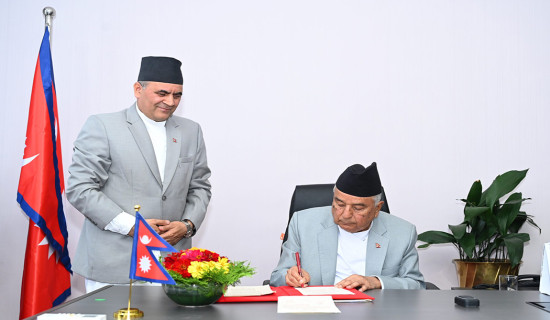- Friday, 19 December 2025
Monkeypox: Emerging Public Health Threat
Mpox (formerly known as Monkeypox) is a zoonotic disease, which has become more prevalent recently, raising concerns across the globe. It is caused by the monkeypox virus (MPXV), enveloped double-stranded DNA virus of the Orthopoxvirus genus in the Poxviridea family. It is a contagious disease that can cause painful rash, swollen lymph nodes, chills, sore throat, fever, headache, and low energy. Although direct contact with skin lesions, bodily fluids, and respiratory droplets can potentially result in human-to-human transmission, the majority of human infections occur through close contact with an infected animal.
It was first discovered in monkeys in 1958, but the incidence in humans wasn't reported till then. But in 1970 the first reported human case of Mpox was seen on a nine-month-old boy in the Democratic Republic of the Congo (DRC). Since its emergence, Mpox has remained endemic in Central and West African countries. However, recently outbreaks have also been reported in non-endemic regions.
Mpox remains a critical public health issue impacting countries worldwide, with a particular concentration of cases in Central Africa. The DRC remains the most severely impacted nation, with the situation being exacerbated by challenges such as region's restricted access to both efficient treatments and vaccines, contributing to severe outcomes, including fatalities. As of May 26, 2024, the DRC had recorded 7,851 cases, with 384 deaths (Case Fatality Rate (CFR): 4.9 per cent). This is a considerable increase from the less than 1 per cent fatality rates seen during the 2022–2023 epidemics.
Global risk
Since the onset of the global Mpox outbreak in 2022, the virus has persisted and even expanded its reach through 2024, continuing to pose significant public health challenges. While the virus has spread widely, it remains particularly prevalent in rural areas where there is higher frequency of human-animal interaction and inadequate healthcare facilities. Recently, cases have surfaced sporadically beyond Africa, appearing across Europe, the Americas, and Asia which has heightened the global risk. Nepal, in particular is also not exempt from this threat, as a 60-year-old person in Nepal tested positive for the disease last year. In response, the Ministry of Health has called for intense attention, urging healthcare providers and the public to remain alert and emphasised on taking proactive measures, including strengthened surveillance, addressing public awareness gaps, ensuring rapid response systems and resource availability to prevent a potential outbreak.
This new challenge is putting public health systems in non-endemic countries to the test, especially in terms of contact tracing, quarantine procedures, and public outreach. A lack of public awareness, stigma, and misinformation have made managing Mpox more difficult, similar to what was witnessed during the HIV/AIDS crisis in late 1981, especially in marginalised communities.
Strategies for Transmission and Mitigation, such as early detection, immunisation programmes, contact tracing, isolation measures, training to healthcare workers, and promotion of environmental hygiene and sanitation, are needed to prevent Mpox outbreaks. Public health systems should focus on educating the community about the virus's route of transmission, emphasising the main source of infection. Empowering local leaders and influencers to engage in conversations about the virus is also necessary, as is providing assistance for those who are impacted.
In addition, one of the major issues in addressing Mpox is the stigma associated with the disease. To reduce this stigma, efforts should focus on awareness campaigns, which should debunk myths and false information regarding the disease, highlighting the fact that anyone can contract Mpox, regardless of background. Furthermore, prejudiced attitudes can be avoided by encouraging compassionate communication and making sure that media coverage is accurate and informative, avoiding misinformation that could unnecessarily mislead the public and cause panic about the virus.
Vaccinating high risk groups such as healthcare workers and residents of locations where outbreaks are known to occur is advised by the World Health Organisation (WHO) and the Centres for Disease Control and Prevention (CDC). JYNNEOS is a 2-dose vaccine which is developed to protect against Mpox and smallpox and people need to get both doses for the best protection. Therefore, this calls for extensive logistic planning, since vaccinations must be stored, transported and given properly.
Addressing Global Health Inequities is one of the most striking aspects of the Mpox outbreak. The difference in availability of healthcare, inadequate surveillance systems, resource limitations between developed and developing countries is one of the most notable features of the Mpox outbreak. Even after years of fighting the disease, endemic countries—especially those in Sub-Saharan Africa—continue to see a serious number of cases. This emphasises the need for more robust global health programmes that priorities the distribution of resources and vaccinations fairly.
Conclusion
To protect ourselves from Mpox at the individual level, actions that could be taken are as follows: practicing good hygiene, limiting exposure to animals, getting vaccinated if you’re in high-risk group or travelling to affected region, staying informed and keeping yourself up-to-date with reliable information and seeking immediate medical advice if you experience any symptoms. Government actions could be prioritising investment in healthcare infrastructure, strengthening international collaboration, facilitating access to vaccines and treatment, addressing stigma, supporting research, tackling the underlying issues that contribute to zoonotic illnesses, including regulating the trade in animals. Therefore, through strategic planning, dedicated efforts and collective actions, we can strengthen the resilience of global health and prevent new outbreaks and manage the existing ones with minimal impact.
(The author is a student of Bachelors of Public Health (BPH) Programme at Nobel College, Kathmandu.)

















